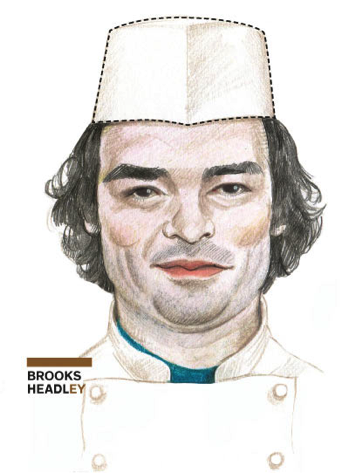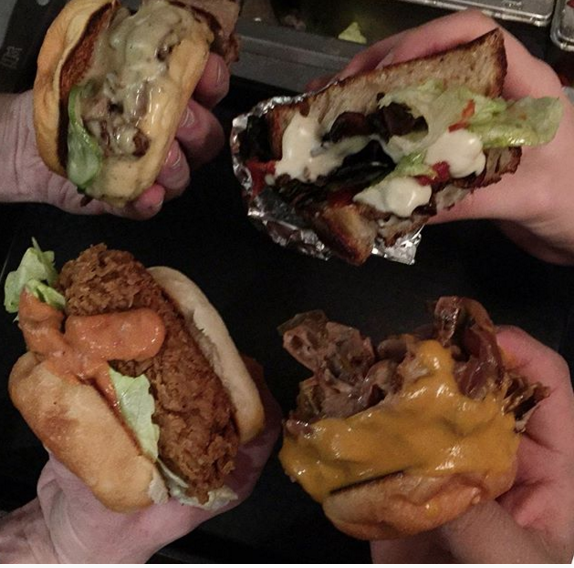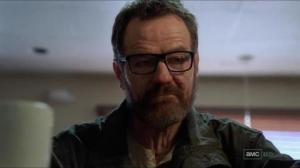Here’s another (very rough) draft I’m working on. Sorry it’s depressing — was in a bad mood last week when I wrote it and now that Trump is set to be President of America’s Next Top Reich, this seemed appropriate. Comments and criticisms very welcome– blunt ones especially.
It’s the Extinction, Stupid–
Fear and Loathing in 2016 America
tl;dr – People like The Walking Dead because our species is about to blow itself into smithereens. We need to get our shit together and start treating this like an emergency.
Table of Contents
- Funny Coincidences Are Funny and Maybe Mean There’s a Higher Being
- Americans Love The Walking Dead Because It Me (It Us? It U.S.?)
- The World Is Going to End
- The Math: It’s Unlikely You’re One of the First Humans—There Probably Won’t Be That Many More of Us
- Nuclear Weapons Will Continue to Be a Thing
- Existential Russian Roulette Ends Poorly: We Will Keep Developing Technologies that Will Have Some Risk of Destroying Us Until We Kill Ourselves
- Our Political System Is Fucked and Cannot Solve the Problem
- We Can’t Even Get Global Warming Right
- Look at This Fucking Election
- Political Parties Have Dumb Incentives
- We’re Doing a Terrible Job Regulating Technology and Consumer Data
- (Detour: Major Technological Revolutions Are Awful for Early Generations—Sucked to Be a Chimney-Sweep)
- But Why Is Our Public Sphere So Terrible?
- We Live in a Totalitarian Consumerist Market Society (Bummer…)
- Companies Can Control You (Like a Lot)
- Corporate Managers Are Tied to the Profit-Maximizing Shareholder Value Machine (Or “The Singularity” as I Like to Call It)
- Our Public Sphere Has Deflated
- Where Are All the Academics and Journalists? Shivering Quietly in the Corner
- Public Institutions Are Permeable to Dominant Private Interests
- The Internet Is for Apocalypse
- Artificial Intelligence Is Just One Example of Terrible, Unsafe Digital Infrastructure
- What If Human Identity Became Impossible to Prove Online? Scary, Right?
- Much Like the GOP Nominees Who Didn’t Realize Trump Had Practically Already Won, We Should Treat This as an Emergency, Because It Is
– – –
Funny Coincidences: If you’re drawn to being a spiritual person, you’ll often find yourself wondering about the artful coincidences that sometimes feel like your fate. For example, that I live in a country whose abbreviated name reads literally as “Us” is amusing to me. Or one time, right after a serious breakup, I tore a muscle in my chest—tangible evidence of my broken heart. Little things like that.
This amusing parlor game can take on a paranoid cast if you’re a younger member of the American ruling class staring out at the bleak national banquet that feels like our future. Why was I born at the inflection point of a declining empire?
That the most obvious looming catastrophe of our making is the earth literally heating up and summoning up a global flood may seem an especially appropriate metaphor. (Never mind that it is not nearly the worst danger we face.)
Indeed, I think one of the most perfect of these fitting ironies is that it looks like the world is going to end, and the name for my generation is “millennial.”
I haven’t seen anyone really bite the bullet and predict our generation will extinguish itself, but in my opinion, this unspoken sense of existential dread pervades American life. Why do you think we’re so obsessed with zombies and the apocalypse after all? Because we’re expecting one. Why do we hate any and all public institutions—because we know they’ve failed us and we’re careening toward catastrophe.
This essay is saying that we need to wake the fuck up and publicly acknowledge what’s going on. Unless something major changes, our species won’t make it out of the 21st century alive.
– – –
Odds Are: Here’s a mathematical conjecture that initially struck me as silly but that I never could quite disprove. It implies the world will likely end soon. The idea is fairly simple: imagine all the human lives to ever exist as names in the telephone book, but spread out chronologically beginning to end. Your life, the one you’re living now, is as one picked randomly from this book, so it’s probably fairly close to the middle. So far, so good.
On the one hand, you might think there’s no surprise that you’re living in the 21st century because the most humans alive at one time do indeed live today. But that raises a scary question: if humanity were destined to grow and thrive for millennia to come—if there were trillions of us yet to be born, what would be the odds of your having drawn a 21st century life and not a later one? Pretty low.
But if our candle is soon to be wicked out, your being here to see the end is no surprise at all: the odds work out quite reasonably. If you’re in the middle of the book, you’re only one or two generations and maybe 15B or so people from the end. (Spoiler alert…)
This logic is far from incontrovertible (someone has to be alive today, no matter how many trillions of people end up being born). It would be merely an amusing parlor trick if only the other augurs of doom were not so insistent.
Nukes: Start with nuclear weapons—thousands of which are in the hands of despotic dictator whose guiding principle is machismo and whose constituency is dying off rapidly. That’s before you get to Pakistan, China, India, Israel —how many nuclear states will undergo massive upheaval this century? (Trump Trump Trump Trump Trump Trump).
While we’re talking odds, how likely was our surviving the 20th century? 70%? Even if each year our chance of avoiding nuclear catastrophe is 99.5%, that gives our species a half-life of a century just from the nuclear threat alone.
Russian Roulette: The key thing to realize is that nuclear weapons are simply the first of an indefinite number of existential threats. Humanity will continue developing technologies with some probability of our extinction. Take bioengineered pandemics, artificial intelligence, climate change, cyberwar, autonomous weapons, nano-machines. (Please). Each one is a different sized bullet in the game of Russian roulette our species is playing. The specific odds each time you pull the trigger aren’t important: if you keep playing, you’re destined to lose.
– – –
Bad Politics: So the question then becomes whether we can build an infrastructure to develop technology safely in time to stop the fatal trigger pull. And in this context both global warming and the current American election each provide a particularly bleak reply.
Global warming because the problem is so obvious yet the solution so far beyond reach. (It’s become increasingly clear that geoengineering will be needed. That brings its own risks.)
Today’s political climate in America is awful both on its own terms as a failure in responsible governance and on a deeper level as to what it means for our declining public sphere.
The incentives American political actors face no longer bear much relation to the welfare of Americans. I don’t want to belabor here the horrifying, Trump-ean specifics of the 2016 election. The point to emphasize is that we live in a time where technological change is accelerating and the ability of the political system and public sphere to manage that change is declining. We’re like a car strapped to a rocket engine—the acceleration feels exhilarating until you lose control, crash and explode.
Our Wimpy Government: Look at the fight between the DOJ and Apple—ignore whether their respective positions are reasonable. Instead notice that the issue of mass consumer data collection, both by the government and by private companies, is absolutely transformative to our society and also nearly entirely removed from public reason or the capacity for reform. The battle lines are set between the unrelenting private interests of tech capital who wants to own this massive windfall and the security state motivated brutishly by dumb fear. The capacity of public interests to compete feels like it’s at a low ebb.
(Btw the government’s handling of bitcoin is similarly Keystone Kops).
In some ways, this dominance by capital is has precedent in American life—look at the robber baron era of the late 19th century. The wealth generated fed into a future Progressive era and the rise of the modern state—a development that may imply a reassuring type of cyclicality and renewal. This to me is the greatest grounds for hope.
(Facebook Is Digital Manchester: It’s worth saying that the changing of technological epochs (from hunter-gatherers to agricultural society; from agriculture to the Industrial Revolution; now from industry to the Digital Revolution) tend to be quite bad for their early generations. Farmers lived shorter and shittier lives than hunter-gatherers; same for the denizens of industrial London and Manchester compared to those who remained in the countryside. If we’re lucky, our digital descendants will look back at our Facebook in 2016 the way we perceive benighted Dickens characters and chimney sweeps.)
But there are a couple crucial distinctions: (1) in no other epochal change did we possess the capacity to destroy ourselves; (2) at no other point did we have the density of centralized control that’s possible (indeed normal) now. The totalitarian state is a 20th century invention.
– – –
Don Draper as 1960s Marx: I do think we have to come to grips with consumerism as a type of totalitarian ideology. Not to say it is as bad as communism or fascism. Protecting voluntary choice is a powerful safeguard albeit an imperfect one that deteriorates over time.
We see this now with the tech boom: the companies that mediate your social life, attention, information, and buying decisions know an incredible amount about you and can test interventions on massive numbers of customers until they find the ones that most reliably trigger a response.
This will only become more dramatic over time. For example, n every time you contact another human being is now a part of some corporate database (online obviously; in person via GPS).
And to close the loop—not only are your choices dominated by the interests of capital, but the ideology of shareholder value also locks corporate management into exclusively using their power to maximize profit. It’s no better sign of what some would call late capitalism that the most profitable profession is the one with literally no other purpose than to make money. The centralization of control in the financial sector further shrinks any behavior that doesn’t maximize profit.
This is not to say capitalism is evil (it continues to lift enormous numbers of people out of poverty), but that our system has become terrifyingly single-minded and denuded of other goals. Civic society in the form of group membership has collapsed (see Bowling Alone; also e.g. religious affiliation). “People have lost the narrative of their lives.” The space for public spirit has shrunk. Private interests are indeed private, closed off, hard-to-regulate, hard even to see.
Along with declining social participation, failing community, and diminishment of alternate sources of meaning, our capacity for public reason has also declined. You can spot this most clearly in the decline of journalism in the 21st century. Despite a growing population and economy, half as many journalists are working today as did twenty years ago. Academia is similarly diminished. Thus, the media infrastructure through which our public discourse is conducted has become broken down and inadequate to the task of understanding and managing massive technological change.
Moreover, because public institutions (the government but also nonprofits) are permeable to the interests of capital, a sclerotic, closed-off, dominant private economy helps lead to a dysfunctional public one. (Informational polarization via social media doesn’t help).
– – –
This all compounds the problem of existential risk. We have no reason to belief the shared infrastructure of the internet (or of our food supply, or our electricity, etc.) is being developed in a safe, sustainable, healthy way. The financial collapse was one example of this, and even then nothing systemic seems to have been fixed.
But our shoddy technological infrastructure is the most frightening. Take data breaches—which are extraordinarily common. Take identity theft—skilled hackers can easily ruin your life. Take the casual disregard for the law of model companies like Uber, AirBnB, and Zenefits. Realize that no federal agency even exists to handle these issues nor is there any pressure to create one.
There’s been a lot of discussion about artificial intelligence as an existential risk—that an artificial agent might become so powerful that it’s misaligned goals could literally spell human doom. To me this is just a particular subspecies of the broader concern of digital infrastructure safety: that our interdependent internet monoculture could break down (or be broken) in an unpredictable set of ways.
To pick one example at random, how do you prove you’re you online? Imagine a technology that can ape you well enough (knows enough data about you for example, can copy your voice) that proving you’re you becomes impossible or very difficult. What would a day look like when no one’s log-ins were secure? Think of all the bank accounts plundered, all the public infrastructure to go haywire. The mind boggles at the mayhem.
– – –
The End: Ultimately, we’re on history’s greatest engineering spree in the shadow of potential extinction. We have no reason to think we can safely regulate what we’re doing. We deserve to be fucking terrified.
And we are (even if we don’t acknowledge the reason consciously). When you see people furious at Mark Zuckerberg for giving 99% of his money to charity, that’s why. When you see an insane panic at a disease that kills zero Americans, that’s why. When approval rates for public institutions are at a record low amid a growing economy, that’s why. When tens of millions vote for Donald Trump (or elect Trump President) that will be why. In our bones, Americans can feel that things are very, very wrong and that no one even has an idea for how to fix it.
I don’t think we’re literally doomed, but I don’t have much interest now in sketching out my theories for how to fix it.
Instead, I want to sound the alarm that we are driving off a cliff and we need to wake the fuck up and realize we’re in the midst of an emergency and that drastic measures are needed.









